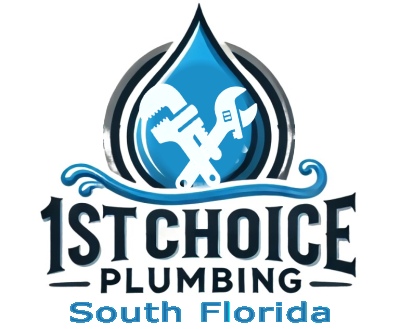Signs Your Hot Water Heater is Failing
A failing hot water heater can cause inconvenience and potential water damage if not addressed. Here are some common warning signs:
- Inconsistent or No Hot Water – If your water temperature fluctuates or you’re getting only lukewarm or cold water, the heating element or thermostat may be failing.
- Strange Noises (Popping or Rumbling Sounds) – Sediment buildup at the bottom of the tank can cause these noises, indicating reduced efficiency and potential damage.
- Rusty or Discolored Water – If your hot water looks rusty or has a metallic taste, the inside of the tank may be corroding.
- Leaks Around the Water Heater – Even small leaks can indicate a crack or failing pressure relief valve.
- Water Takes Too Long to Heat – If your water heater is struggling to keep up with demand, it may be aging or the heating element could be wearing out.
- Rising Energy Bills – A water heater that works inefficiently uses more energy, leading to higher utility costs.
- Old Age (8-12 Years for Traditional Tanks) – If your unit is within this range, consider replacing it before it fails. Tankless water heaters last longer (15-20 years).
Regular Maintenance for Your Water Heater
Proper water heater maintenance can extend the lifespan of your water heater and improve efficiency. Here’s what you should do:
- Flush the Tank Annually
- Why? Removes sediment buildup that can cause inefficiency and damage.
- How? Drain the tank completely, then refill it to flush out debris.
- Check & Replace the Anode Rod (Every 3-5 Years)
- Why? The anode rod prevents the tank from rusting but wears out over time.
- How? Inspect it for heavy corrosion and replace it if it’s severely degraded.
- Inspect the Pressure Relief Valve (Annually)
- Why? Ensures the valve functions properly to prevent dangerous pressure buildup.
- How? Lift the valve’s lever to see if water flows freely; if not, replace it.
- Check for Leaks & Corrosion (Regularly)
- Why? Catching leaks early prevents water damage and major repairs.
- How? Inspect around the base of the heater and fittings for moisture or rust.
- Test the Thermostat & Heating Elements (As Needed)
- Why? Ensures water is heated to the right temperature efficiently.
- How? Adjust the thermostat and monitor water temperature consistency.
- Ensure Proper Ventilation (Gas Water Heaters)
- Why? Prevents carbon monoxide buildup and improves efficiency.
- How? Check vents for obstructions and ensure they’re properly sealed.
Need a Water Heater Inspection or Replacement?
If your hot water heater is showing signs of failure, 1st Choice Plumbing in Palm Beach County can assess the situation and provide expert repair or replacement services. Regular maintenance can save you money and prevent unexpected breakdowns!
Would you like recommendations on a new water heater or scheduling a maintenance check?
Hot water heaters are essential appliances in most homes, providing a convenient and reliable source of hot water for various needs. Here’s a breakdown of how they work:
Types of Hot Water Heaters
There are two main types of hot water heaters:
- Tank-type water heaters: These are the most common type. They store hot water in a tank, typically ranging from 20 to 80 gallons in capacity.
- Tankless water heaters: These heat water on demand, without the use of a storage tank. They are more energy-efficient than tank-type heaters but tend to have a higher upfront cost.
How Tank-Type Water Heaters Work
- Cold water intake: Cold water enters the tank through a dip tube that extends to the bottom of the tank.
- Heating: A heating element (electric) or burner (gas) heats the water in the tank.
- Hot water storage: The heated water rises to the top of the tank, ready for use.
- Hot water outlet: When you turn on a hot water tap, hot water is drawn from the top of the tank and sent through your home’s plumbing system.
- Thermostat: The thermostat regulates the temperature of the water in the tank. When the temperature drops below the set point, the heating element or burner turns on to heat the water again.
How Tankless Water Heaters Work
- Cold water intake: Cold water enters the unit when you turn on a hot water tap.
- Heating: A high-powered burner or heating element heats the water as it flows through the unit.
- Hot water outlet: The heated water is delivered to your home’s plumbing system on demand.
Key Components of a Hot Water Heater
- Tank: Stores hot water in tank-type heaters.
- Dip tube: Brings cold water to the bottom of the tank.
- Heating element or burner: Heats the water.
- Thermostat: Regulates the water temperature.
- Pressure relief valve: Prevents excessive pressure buildup in the tank.
- Drain valve: Allows you to drain the tank for maintenance.
Important Considerations
- Capacity: Choose a water heater with a capacity that meets your household’s hot water needs.
- Energy efficiency: Look for a water heater with a high energy factor (EF) rating.
- Lifespan: Hot water heaters typically last 10-15 years.
- Maintenance: Regular maintenance can help extend the life of your water heater.
References
- How Does A Water Heater Work | King Heating, Cooling & Plumbing: https://www.kingheating.com/blog/how-does-a-water-heater-work
- Learn About Gas Water Heater Parts & Operation | A. O. Smith: https://www.aosmithatlowes.com/learn-more/gas-water-heaters/

